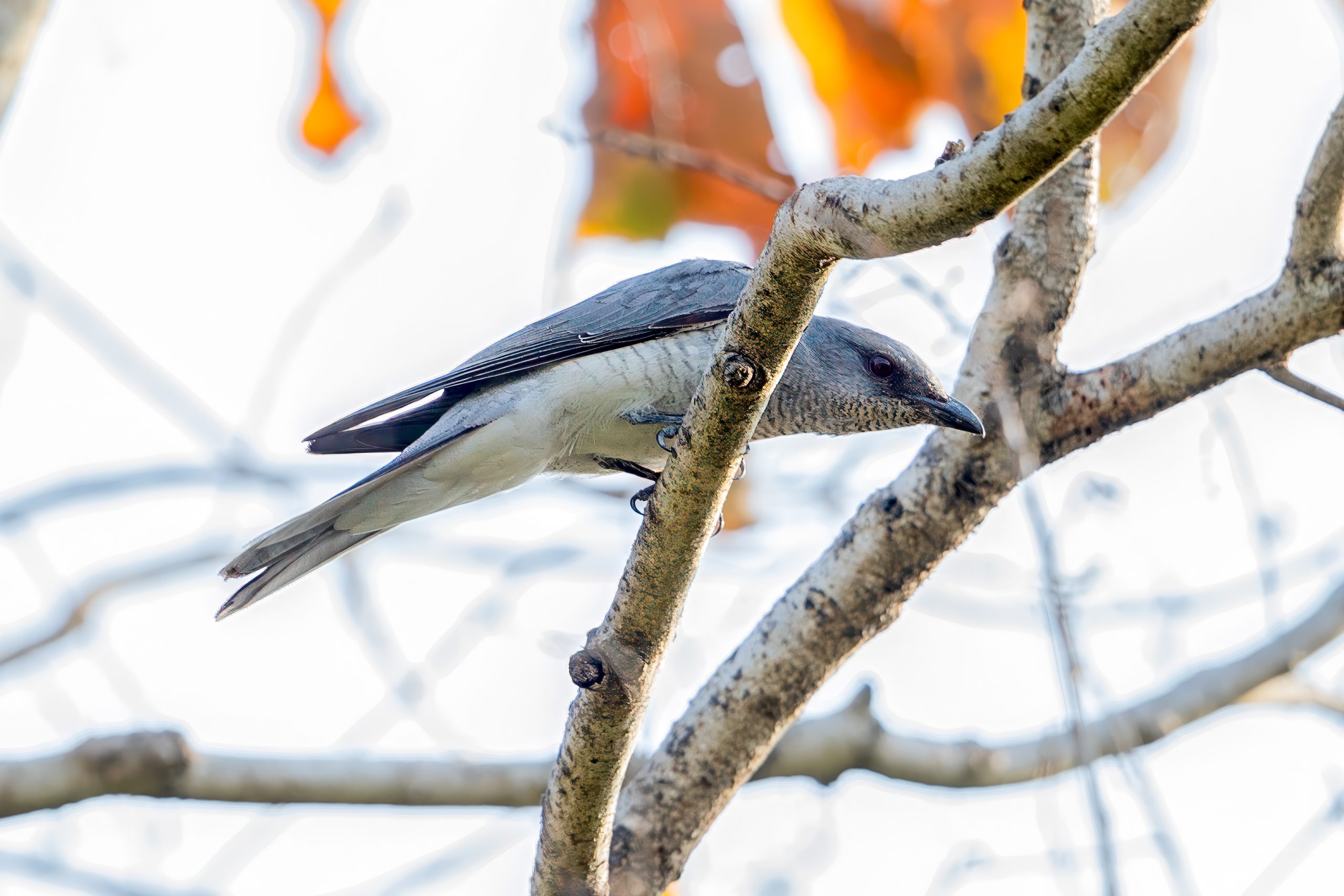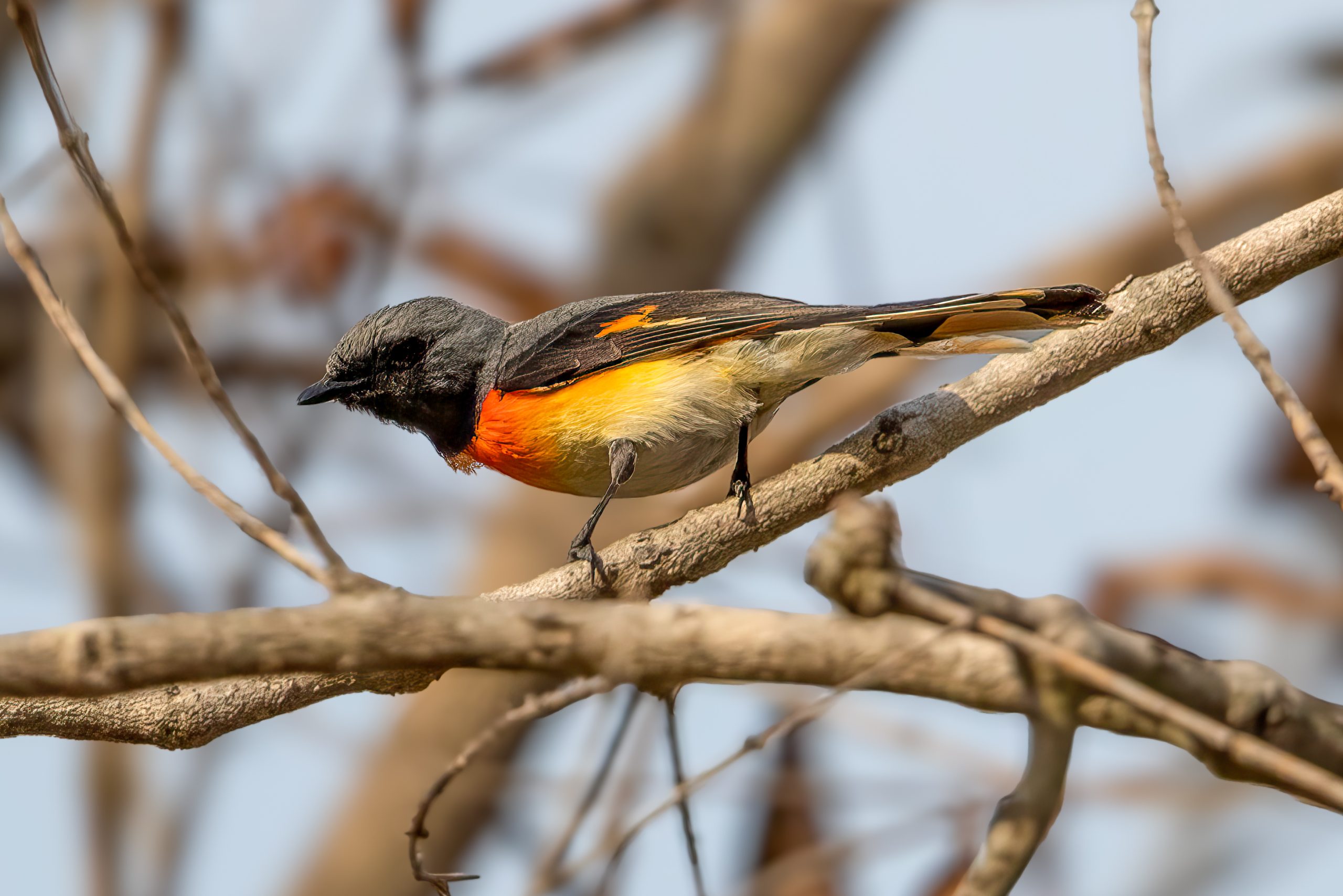Description
The black-winged cuckooshrike (Lalage melaschistos) is a medium-sized bird with a wide range across the Indian subcontinent, Southeast Asia, and southern China. It measures around 19.5-24 cm (7.7-9.5 in) in length. It exhibits a combination of slate-grey to black plumage with lighter underparts. Males are typically dark grey with black wings. Females are similar but paler with faint barring on the undersides. The black-winged cuckooshrike is very similar to the Indochinese cuckooshrike (Lalage polioptera), found only in parts of Indochina, but it can be distinguished by its generally darker plumage and a more graduated tail.
Diet & habitat
Habitats for the black-winged cuckooshrike include deciduous forests, evergreen forests, and occasionally plantations and urban areas with sufficient tree cover. It prefers habitats that offer abundant food resources and suitable nesting sites. This species primarily feeds on insects, including caterpillars, beetles, and other small invertebrates. It forages in the mid to upper canopy, often seen gleaning insects from leaves and branches or catching prey in flight. Occasionally, it also consumes berries and other fruits, making it somewhat omnivorous.
Migration
The black-winged cuckooshrike exhibits partial migratory behavior, with populations in high altitudes and China undertaking seasonal movements while many others remain resident throughout the year. Those that migrate typically travel shorter distances compared to long-distance migratory birds, moving to lower altitudes or warmer regions, such as Central India, southern Indochina, and Taiwan, during the winter months. These movements help the species avoid harsh climatic conditions and access food resources more efficiently.
Nesting
Breeding season for the black-winged cuckooshrike usually occurs from April to July, varying slightly depending on the geographic location. The species builds a small, cup-shaped nest high in the canopy, often camouflaged with lichens and moss. The female typically lays two to three eggs, which she incubates for about 14-16 days. Both parents participate in feeding the chicks, which fledge approximately 12-14 days after hatching.
Status
The black-winged cuckooshrike is currently listed as least concern by the IUCN Red List, indicating that it is not at immediate risk of extinction. However, habitat loss due to deforestation and land-use changes poses a potential threat to its populations.






